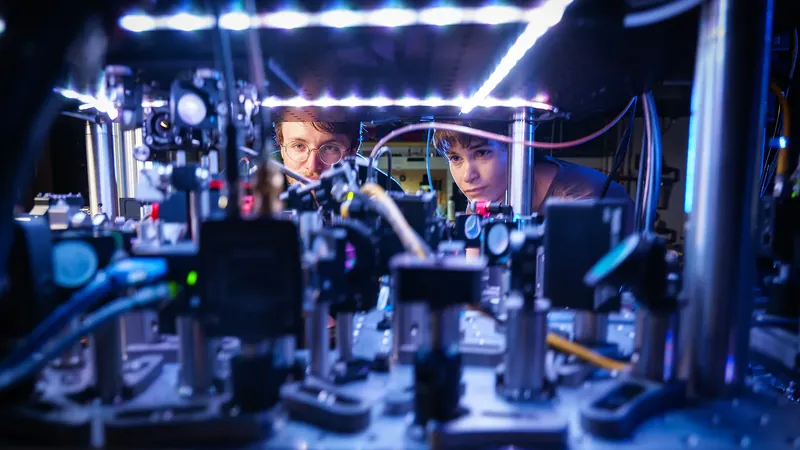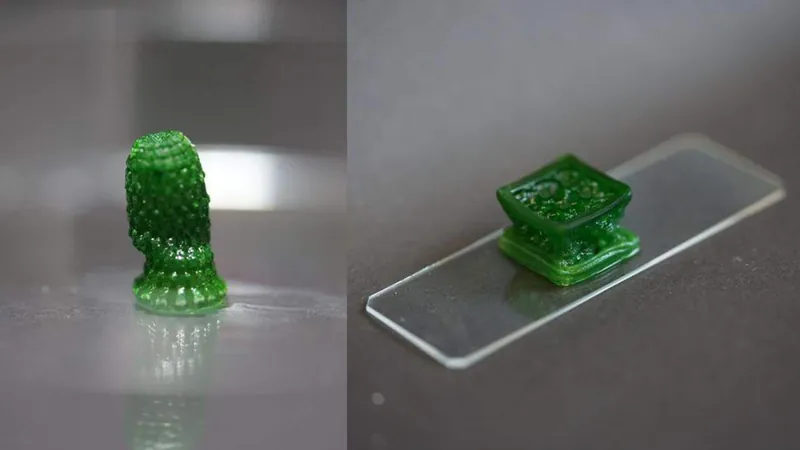
Revolutionizing Navigation: Meet the Quantum Sensor That Tracks 3D Movement Without GPS
2025-06-14
Author: William
Unlocking the Future of Navigation
Imagine a device so advanced that it could one day guide submarines, spacecraft, and cars with unmatched precision—without ever needing GPS. Enter the groundbreaking quantum sensor, a new type of atom "interferometer" that tracks 3D movement, potentially transforming how we navigate in all dimensions.
A Leap Beyond Traditional Technology
Traditional atom interferometers only measure acceleration in a single direction, but the world we live in? It’s three-dimensional. As Kendall Mehling, a CU Boulder graduate student and co-author of the study, explains, "To know where I'm going and where I’ve been, I need to track my acceleration in all three dimensions."
Funding Innovation: NASA Steps In
This month, a research team from CU Boulder published their landmark study, "Vector atom accelerometry in an optical lattice," in Science Advances. Their pioneering work received a major boost earlier this year when NASA awarded them a staggering $5.5 million grant through its Quantum Pathways Institute.
Quantum Mechanics in Action
What makes this device truly remarkable is its intricate engineering. Using six lasers as fine as a human hair, the researchers create a stable cloud of rubidium atoms. With the aid of artificial intelligence, they manipulate these lasers in intricate patterns, allowing them to track the motion of atoms as they respond to various accelerations, akin to stepping on a car's gas pedal.
Going Beyond GPS
While current vehicles rely on GPS and conventional accelerometers for navigation, this new quantum device, although still under development, shows immense promise. Mehling offers insights into the potential longevity of atom-based sensors, stating, "If you leave a classical sensor out in different environments for years, it will age and decay. Atoms don't age."
The Science of Splitting Atoms
Interferometers have a rich history, used for everything from transmitting information through optical fibers to hunting for gravitational waves. At the core of their function is a simple principle: splitting beams and observing their interaction.
In this innovative study, the researchers have applied that concept to atoms. The device, about the size of an air hockey table, cools rubidium atoms to near absolute zero, creating a state of matter known as Bose-Einstein Condensate. This chilling process allows atoms to exist in a state of superposition, where they can appear in two places simultaneously.
Decoding Motion with Quantum Fingerprints
During experimentation, the atoms are split and sent on two separate paths. Upon returning together, they form a distinctive interference pattern that acts like a fingerprint of motion, revealing the acceleration experienced.
Streamlining Quantum Measurement with AI
After nearly three years of meticulous development, the team has created a compact device that shows promise for real-world applications. A key element in their success has been an AI program that aids in optimizing the laser adjustments necessary for measuring accelerations.
The Road Ahead
Currently, this quantum device is capable of measuring accelerations much smaller than the force of Earth's gravity, still a far cry from existing technologies. However, the research team is committed to refining their approach, aiming to enhance its performance significantly in the upcoming years. As Holland notes, "We're not exactly sure of all the possible ramifications of this research, because it opens up a door."
Conclusion: A New Era in Navigation Technology
The implications of this quantum sensor technology could reshape our understanding of navigation and measurement. As this research continues, the possibilities for innovation and enhanced accuracy in diverse fields could be limitless.









 Brasil (PT)
Brasil (PT)
 Canada (EN)
Canada (EN)
 Chile (ES)
Chile (ES)
 Česko (CS)
Česko (CS)
 대한민국 (KO)
대한민국 (KO)
 España (ES)
España (ES)
 France (FR)
France (FR)
 Hong Kong (EN)
Hong Kong (EN)
 Italia (IT)
Italia (IT)
 日本 (JA)
日本 (JA)
 Magyarország (HU)
Magyarország (HU)
 Norge (NO)
Norge (NO)
 Polska (PL)
Polska (PL)
 Schweiz (DE)
Schweiz (DE)
 Singapore (EN)
Singapore (EN)
 Sverige (SV)
Sverige (SV)
 Suomi (FI)
Suomi (FI)
 Türkiye (TR)
Türkiye (TR)
 الإمارات العربية المتحدة (AR)
الإمارات العربية المتحدة (AR)